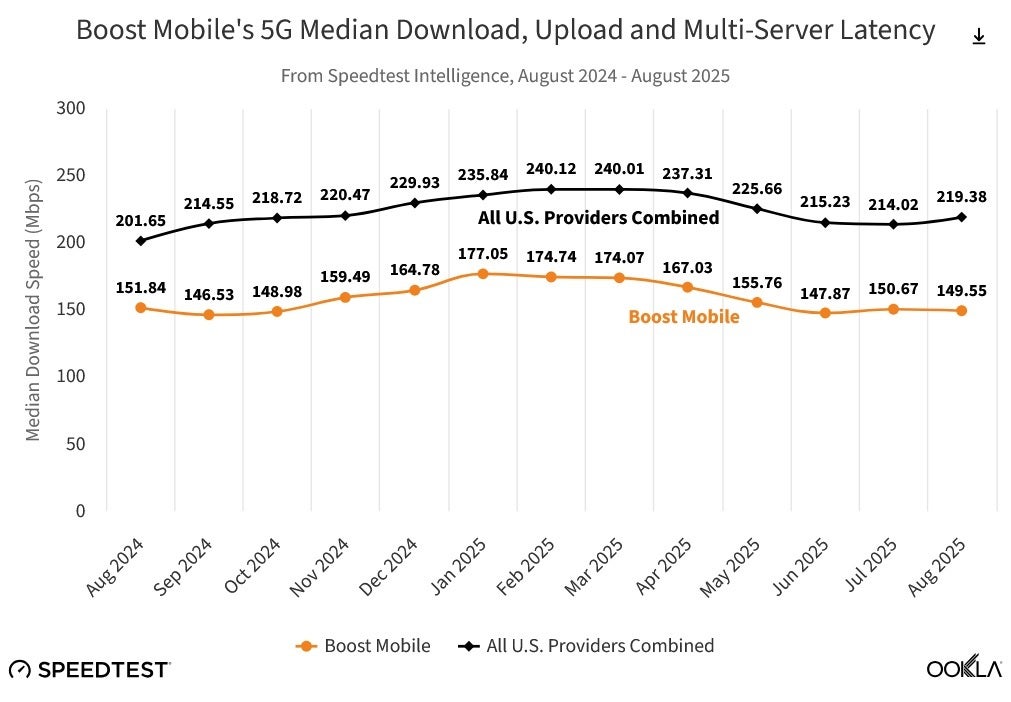Echostar to become a hybrid MVNO
That deal saw SpaceX buy approximately 90MHz of spectrum from EchoStar for $17 billion, which ends the FCC’s investigation into EchoStar’s use of its spectrum. SpaceX wanted the spectrum to widen the footprint of its direct-to-cell satellite technology. SpaceX Chairman and CEO Elon Musk had wanted the spectrum, which some believe was the reason why FCC Chairman Carr had pressured EchoStar in the first place. The deal sends approximately 40MHz of 2GHz/AWS-4 band spectrum and 50MHz of H-Block Spectrum to SpaceX.
Ookla compares Boost’s 5G data speeds to the rest of the wireless providers in the U.S.
Last month, Boost’s median 5G download data speeds as measured by Ookla came to 149.55 Mbps compared to 219.38 Mbps for all U.S. providers combined. Boost’s Median 5G upload speeds last month came to 8.93 Mbps versus 10.81 Mbps for all U.S. providers combined. And Boost’s median 5G latency also failed to match the median speed of all U.S. providers. Boost had a medial latency of 61 milliseconds (ms) compared to 50 (ms) for the combined carriers.


Boost was slower that the combined 4G download data speed of all U.S. wireless providers during August 2025. | Image credit-Ookla
Boost had 7.357 million wireless customers as of June. According to Ookla, Boost will probably sell its remaining spectrum, made up of AWS and CBRS licenses, to Verizon. For what it’s worth, Boost had been using three spectrum bands for its customers: Band n71 (600 MHz), Band n66 (AWS), and Band n70 (AWS-4). EchoStar owns licenses in other spectrum bands such as 3.5 GHz CBRS and 3.45 GHz, but didn’t have the radio equipment needed to actually employ those bands for its customers.
What will happen next to Boost customers?
Boost had used AT&T and T-Mobile to complement its own network. Ookla’s testing showed that Boost leans heavily on AT&T‘s network, using it in metropolitan areas and for the majority of calls made along rural state routes. Once the deals between EchoStar and AT&T, and EchoStar and SpaceX, close and Boost gives up all of the spectrum it sold, you can expect that the new hybrid MVNO Boost will be using AT&T‘s network.
No longer a candidate to join AT&T, Verizon, and T-Mobile to become one of the Big 4, Boost will partially return to its roots as a hybrid MVNO.


“Iconic Phones” is coming this Fall!
Good news everyone! Over the past year we’ve been working on an exciting passion project of ours and we’re thrilled to announce it will be ready to release in just a few short months.
LEARN MORE AND SIGN UP FOR EARLY BIRD DISCOUNTS HERE
#U.S #mobile #customers #wont #Boosts #dismantled #network

